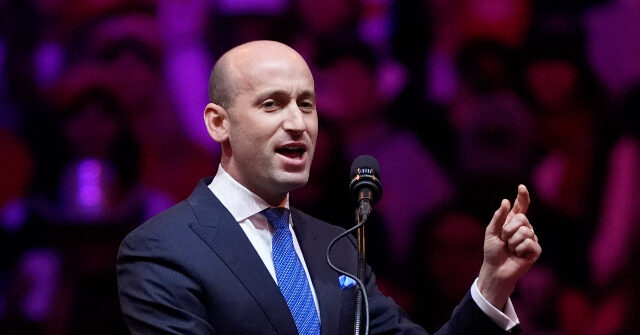In a significant move signaling a commitment to his agenda of pro-American immigration reform, President Donald Trump has reportedly appointed Stephen Miller, an influential immigration expert, as his deputy chief of staff. This decision, confirmed by a source close to the president-elect and initially reported by CNN, emphasizes Trump’s focus on returning the U.S. to a low-migration, high-tech future as the nation grapples with its immigration policies. Miller is expected to play a crucial role in shaping the administration’s immigration strategy and managing its implementation across various government departments, thus placing immigration reform at the forefront of Trump’s presidency.
Should Miller be officially appointed, he will work closely with Chief of Staff Susan Wiles, who brings a wealth of experience to their team. The appointment reinforces the administration’s commitment to enforcing strict immigration policies spearheaded by the administration’s pick to lead the Department of Homeland Security, Tom Homan. As a champion for repatriation and strict enforcement, Homan will work alongside Miller to ensure that Trump’s immigration reform agenda is realized, even amidst potential resistance from within the agencies charged with these tasks.
Miller’s prior experience as Trump’s top immigration adviser during his first term underscores his knowledge of the challenges ahead. He faced significant opposition from establishment figures and media outlets who frequently supported expansive migration policies. In a potential second term, Miller’s role could become more contentious as he aims to navigate the contradictory demands around immigration. While many of Trump’s allies within the business sector advocate for increased migration to bolster the economy, Trump has received a mandate from voters keen on reducing immigration levels that they believe negatively impact American wages, housing costs, and overall economic investment.
In fulfilling his responsibilities, Miller will likely feel the pressure from various sectors. For instance, there is a growing call from Fortune 500 companies for increased white-collar migration through airports as Trump continues to promise cuts to blue-collar migration across the southern border. The balancing act Miller will face entails not only managing the competing interests of economic stakeholders but also ensuring that immigration policies align with the administration’s commitment to protecting American workers’ rights and opportunities.
Media portrayal of Miller has often painted him as antagonistic towards migrants, yet his policies and strategies reflect a broader concern for the economic implications of immigration. There exists a pressing discussion regarding the relationship between demographic trends and economic growth, exemplified in comments made by BlackRock founder Larry Fink. He pointed to countries with anti-immigration policies, such as China and Japan, that are now focusing on new technologies like robotics and artificial intelligence to cope with shrinking populations, suggesting that the quality of economic life can improve even amidst demographic declines.
Ultimately, Miller’s role will extend beyond simple policy enforcement; he will need to engage with various departments including Homeland Security, State, and Education to ensure a cohesive immigration strategy. This balancing act, amid often contradictory pressures, will test Miller’s ability and strategic thinking as he aims to fulfill Trump’s promise of a revitalized immigration system that prioritizes the needs and interests of American citizens while navigating the complex landscape of modern immigration dynamics.

